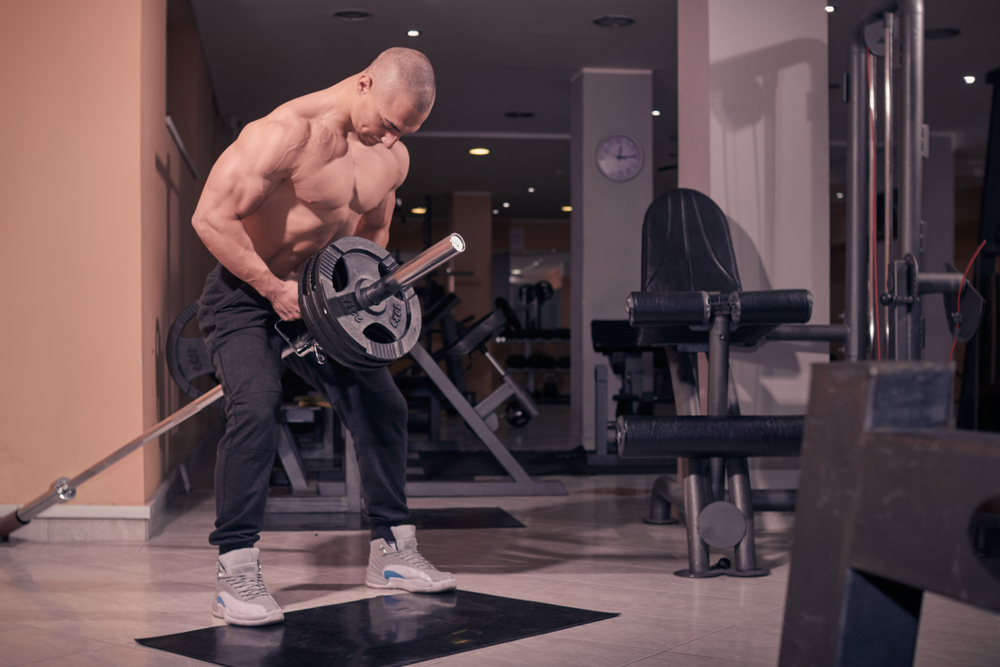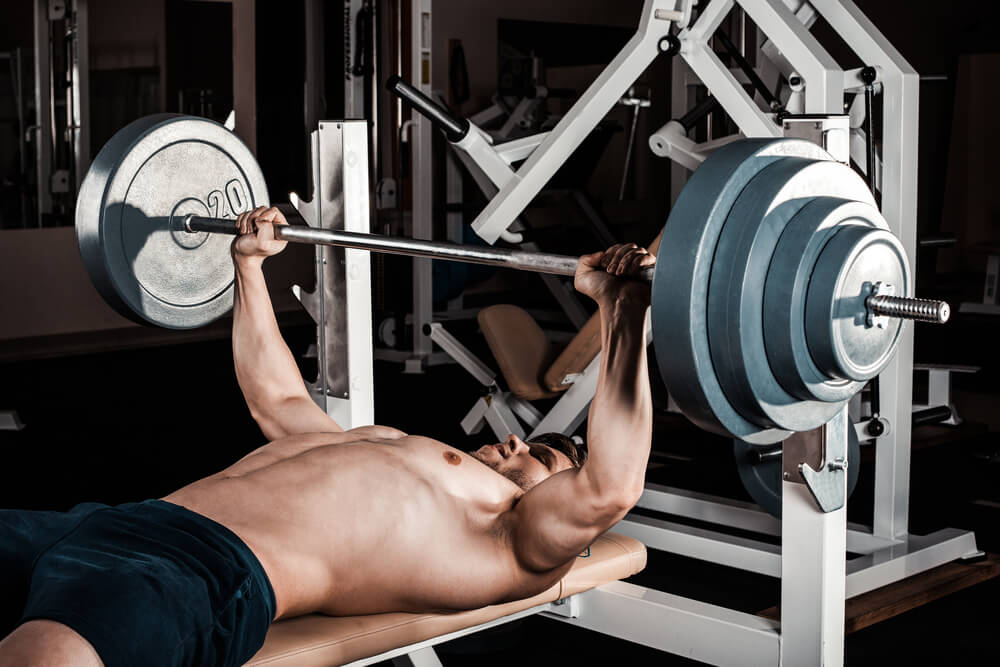 Don’t you just love it when someone compliments you? You’re walking down the street and a total stranger tells you how much they love your shirt. Or you’re on a date and they compliment you on your watch or your shoes. It’s a nice feeling, even if all you did was pick clothing out from your closet.
Don’t you just love it when someone compliments you? You’re walking down the street and a total stranger tells you how much they love your shirt. Or you’re on a date and they compliment you on your watch or your shoes. It’s a nice feeling, even if all you did was pick clothing out from your closet.
The only better feeling than a compliment paid to something you can see is something you can’t.
When you hit the gym, you can see the improvements your hard work pay off in the form of sculpted abs, larger biceps and a formed, defined chest.
But what about the back side of your body?
Unless your snapping selfies over your shoulder or standing in front of a series of mirrors, chances are you can’t really see your back. You may have no idea what it even looks like.
So when someone comes up and tells you how great your back looks, that’s a true compliment, because they can see what you can’t.
In order to land those invisible compliments though, it’s crucial to put in the necessary back work, and one of the best ways to do that is with the T bar row.
In fact, here’s everything you need to know about the lift, what it does, and how to best perform it.
How to Perform the T Bar Row
The lift uses a one-sided loaded barbell. You’ll also need (traditionally) a V-handle, although there are some variations to the handle option (we’ll get into this more later).
Load up the one end of the barbell, than walk over the barbell, straddling it in between your legs.
You’ll want the loaded end to sit right in front of you. Stand shoulder-width apart and slide the V-handle directly under where the weight is.
Hold onto the V-handle with both hands.
When doing this, make sure to keep your back straight. You’ll end up with about a 45 degree angle of your thighs and your back.
Keep this angle. You should never tilt back during the lift.
Doing so increases your chance of injury. If you find your back rounding while lifting, it likely means the weight is too heavy. It’s much better to perfect your form before trying to add on more weight.
Now, lift the V-handle back toward your body. Aim right below your pectoral muscles and into your abdominal muscles.
While pulling the V-handle, it lifts the loaded end of the barbell up.
As you lift, make sure to squeeze your shoulder blades together. You also want to keep your elbows tight to your body.
Don’t flair the elbows out. If you flair the elbows out it becomes more of a chest and bicep exercise.
Keeping the elbows tight to the body puts the lifting focus on the middle of your back and into the shoulders.

T Bar Row Exercise Variations
There are a few different ways you can perform this lift.
For starters, you can perform a one-arm lift. This is where instead of using any kind of handle you instead grab the barbell with a single hand. When pulling up you still want to make sure you keep your elbow tight to your side.
Generally, you don’t need to do the one arm variation, unless you’ve found one side of your middle back seems to be stronger than the other.
When this is the case, one side will dominate the lift while you perform the regular T bar row, so this one arm variation works to help correct this issue.
When performing the one arm version of the lift you may find it’s more comfortable to stand next to the bar (one the side of your lifting arm) instead of straddling it.
This is more a personal preference than anything else, so feel free to experiment with what feels and works best for you.
If you don’t have a handle at all you can still perform the lift. When this happens just take hold of the barbell directly under the weight with your hands, using an overlapping grasp.
Ideally you will have a handle though as lifting the barbell in this manor will reduce your range of motion.
To increase the range of motion (without using handles) place smaller weights on the barbell. Instead of using a 35 pound plate, use 10s and a 5.
The smaller plates are not as large, and as such will not come in contact with your body as quickly.
By reducing the diameter of the plate you’ll give your arms a greater range of motion when pulling the weight back up, which helps with the overall performance of the lift.
Increase Range of Motion
The best way to get the most out of any lift isn’t to add more weight. It’s to increase the range of motion.
An increased range of motion increases the stretch placed on your muscles. This increased stretch forces your muscles to work harder. It also forces more of the muscle to work harder.
If you look, for example, at the incline curl, you increase the range of motion on the bicep, which helps increase not only your overall strength but the size.
The same is true with squats. There’s a reason why you squat at least to a 90 degree angle (or why the sumo squat is such a great way to build your butt). It all comes down to an increased range of motion.
You can increase your range of motion with regards to the T bar row.
Typically, this lift is done using the V-handle.
However, due to the construction of the handle, it does limit your overall range of motion. You may only be able to pull the bar back up to where your elbows are more or less flush with your back.
If available, you need to take two individual handles and clip the two handles together. Because there’s more slack between the two handles and each allows for individual movement, you can pull the barbell back to you even further.
This increases the strain and stretch on your back. The increased range in motion will help you strengthen and sculpt your back faster.
Just remember, it’s perfectly fine to use a lighter weight.
It’s better to go with a lighter weight and increase your range of motion than to go with a heavier weight and limit this motion.

Muscles Used
The T bar row hits the muscles in your middle back. This area is right below your shoulder blades and tapers off right above your waste line. The specific muscles are the lower trapezius, middle trapezius and the rhomboids.
These muscles mentioned are the primary muscles used during the lift. However, some secondary muscles are used to help support the body.
Your shoulders will be engaged as you pull the weight toward your chest. The same is true with your biceps.
Your abdominal muscles will help keep your core straight, while even your glutes and hamstrings are engaged due to the 45 degree angle of the lift. While these are secondary muscles hit, having stronger secondary muscles will improve the performance of nearly all other upper body lifts.
Realistically, this is the very best mid back exercise you can perform. It hits similar muscles as the seated cable row, bent over barbell row and the dumbbell incline row.
The T bar row is ideally the best lift you can do for this muscle group because gravity is against you on the lift. You’re completely fighting against gravity when lifting up on the barbell.
With other lifts, such as the seated cable row, you’re pulling against a machine but you’re not fighting gravity.
Plus, the T bar row with handles gives you the greatest range of motion, so you’ll hit the region deeper than you can with any other lift.
When to Perform the Lift
Relatively speaking, the lift hits a very small portion of your back. This area helps keep your body straight and acts as support to other, larger areas of the back.
However, due to the smaller nature of the muscular area it’s best to leave it near the end of your back workout.
It’s always best to go for the big lifts first. Whether you’re performing deadlifts on back day, are putting up shoulder presses or any other major back exercise, you need to work these larger weight lifts first.
This way, you do not burn through all of your energy on the smaller muscular area.
As you’ll likely only lift up to 45 pounds, feel free to put this in at the very end of your back day.
Reps and Sets
Ideally you’ll perform three sets of this lift. It is a smaller muscle region so it doesn’t take as much to overload the muscles.
Plus, if it’s at the tail end of your back workout it’s fine if you only squeeze in two sets, but we like to keep everything at three (four for the major lifts).
You’ll want to load up the weights so you can can put up between eight and 12 reps. This will give you the best combination of increasing strength and size.
If, while using the handles and insuring excellent form, you’re able to squeeze out more than 12 reps it means your weight is too light.
If you want to shoot for just strength building, it’s best to go heavier and fewer reps. For optimal strength building, aim for around four or five reps.
On the other hand, if you are not interested in either building strength or size and you want to maintain a lean, muscular look but want to keep this area of your body engaged, it’s fine to squeeze off up to 20 reps.
However, anything over 20 and you’re not challenge the muscles at all.

Home Workout
So let’s say you workout at home instead of signing up for gym memberships. If that’s the case, there’s a good chance you don’t have a full-sized barbell just sitting around.
First, before we go further, we recommend looking around local garage sales for exercise equipment as it’s a great location to find cheap, quality gear. If you have space in the garage or basement for a barbell, absolutely go for it.
Toss down some rubber mats and you’re good to go.
But, if you don’t have a barbell at all, what are you to do?
Well, you realistically can’t do the T bar row. You really do need the barbell to do this exercise.
However, there are similar options you can utilize in order to hit the middle back area. The dumbbell row works as a suitable substitute.
This is a move you’ll perform one arm at a time. To perform the move, grab the weight with your left arm, then place your right hand and right knee on an exercise bench (you can even use a coffee table if you can maintain a straight back that’s parallel to the floor).
Much like you would with the T bar row, pull your arm up with your elbow straight against your body in order to maximize the effort placed onto your middle back.
If you have a workout bench you can lay on it chest first while in the incline position and perform the row movement as well.
In Conclusion
We all love to put in work on the front of our body.
After all, who doesn’t love a well put together piece of art!?
But you also need to focus on the portion of your body you can’t see. Your back is just as important as your chest.
In many ways, it’s even more important. Which is why you need to put in the necessary time on sculpting and defining your back muscles.
The T bar row is one of the very best ways to do just that. So the next time you’re at the gym, make sure to add this move into your back day!
Terry Asher
Latest posts by Terry Asher (see all)
- Better Family – Product Review Liquid Daily 2 oz - Dec 16, 2024
- Post-Workout Recovery: The Key to Optimal Performance - Nov 25, 2024
- Pre-Workout Supplements – Everything You Need To Know - Nov 18, 2024









[…] via- https://gymjunkies.com/t-bar-row/ […]
[…] 4, 2018 Facebook Twitter Google+ Pinterest WhatsApp var td_screen_width = window.innerWidth; if ( td_screen_width >= 1140 […]
I read some articles on this site and I think your blog is really interesting and has great information. Thank you for your sharing.
[…] the row, you can use the metal row bar here. Or you can use the […]
[…] if you work out at a gym with a T-bar row, that’s great too because you can really add on the weight and focus on your […]
[…] the row, you can use the metal row bar here. Or you can use the […]
Hop onto the best microwave convection oven in india Reviews & Buyer’s Guide. Choose the
best warranty.
One stop place to get the best kitchen appliances reviews, home appliances reviews, product review sites etc.
Grab the best microwave convection oven for baking, cooking with buyers guide and review.
[…] In the same way, many tell you to retract your scapula before you perform a dumbbell or cable row for your […]
[…] In the same way, many tell you to retract your scapula before you perform a dumbbell or cable row for your […]
[…] In the same way, many tell you to retract your scapula before you perform a dumbbell or cable row for your […]